► Toyota Prius now plug-in hybrid only
► Sleek new look, punchier performance
► Two models offered, from £37,315
You may recall the new Toyota Prius Plug-in Hybrid wasn’t originally destined for these shores. Well, Toyota GB had a change of heart, deciding to offer the fastest, funkiest, and most desirable Prius in fifth-generation form in the UK after all to do battle with the best hybrid cars.
By pushing the peak of the roof towards the rear of the car and lowering it significantly, a far more athletic shape has been created. It’s not as aerodynamic as it looks – the drag co-efficient is 0.27 – but certainly cuts a dash. Large 19-inch wheels and a stretched wheelbase complete the look, distancing it from the Uber fodder we’re familiar with.
Whether that’ll be enough to build on the dismal sales of the old car – just 563 were sold in 2022 – remains to be seen. Toyota’s not speaking specifically about sales volumes, which is code for it won’t be making masssive numbers, pointing instead to the Corolla’s healthy take-up by the business car market.
At a glance
Pros: Effortlessly refined, smooth performance, excellent efficiency, future car styling
Cons: Interior lacks wow factor, small model range, punchy pricing
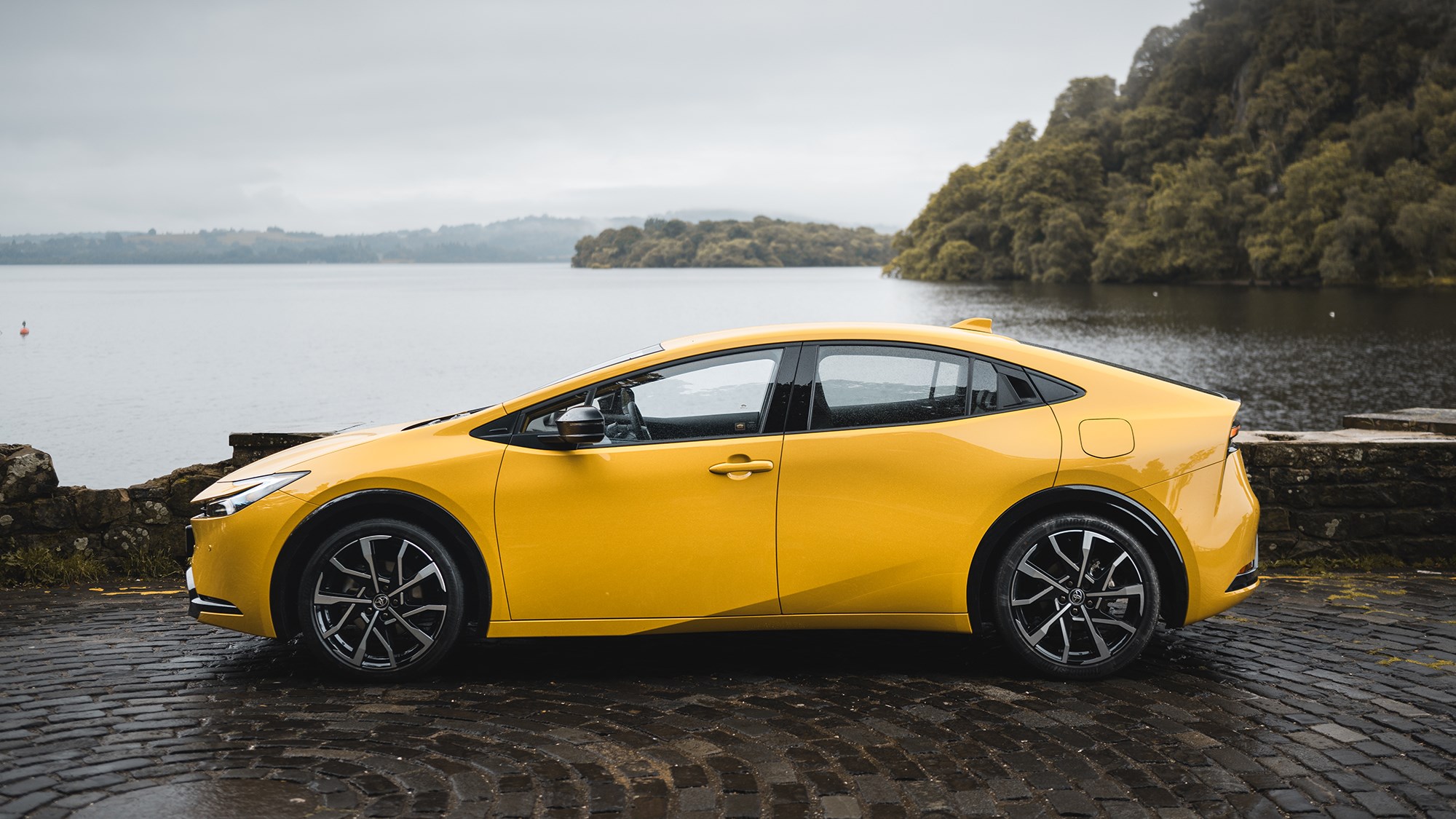
What’s new
Pretty much everything. Once again, the Prius is a pioneer for Toyota, being the first car to use the a variety of bits and pieces that’ll slot into other models. That includes the C-HR SUV driven elsewhere on this site, next Corolla and plenty more.
Underpinning the Toyota Prius is the second-gen Toyota New Global Architecture (TNGA), in this case the fresh GA-C platform. It’s stiffer and lighter than the old car’s bodyshell, while the fuel tank and hybrid battery have been moved to lower the centre of gravity.
The Prius benefits from Toyota’s third generation plug-in hybrid system. Offered with a hefty 13.6kWh, it will drive up to 53 miles (claimed) on batteries, which should cover most people’s commutes. As a hybrid, it produces CO2 emissions rating of 12g/km (with 17in wheels) – the lowest yet for a Prius. If that wasn’t enough, there’s also a new 2.0-litre petrol engine with more power and greater efficiency.
What are the specs?
The headline here is that overall power is up by an eyebrow raising 99bhp, for a total system output of 220bhp (150bhp for the 2.0-litre engine and 161bhp for the motor). This drops the 0-62mph time to a sprightly 6.8-seconds, yet it’s still good for a claimed a sci-fi-like 564.9mpg on the WLTP test cycle – not really feasable in real-world driving.
That new battery is 50% denser than the old car’s lower capacity pack using fewer cells – meaning it takes up less space. After a rather sluggish four-hour recharge thanks to a slow 3.3kW maximum charge rate. This is off the pace, considering an increasing number of rival PHEVs are now offering CCS charging. It’s the biggest downside of what is otherwise a excellent hybrid drivetrain.
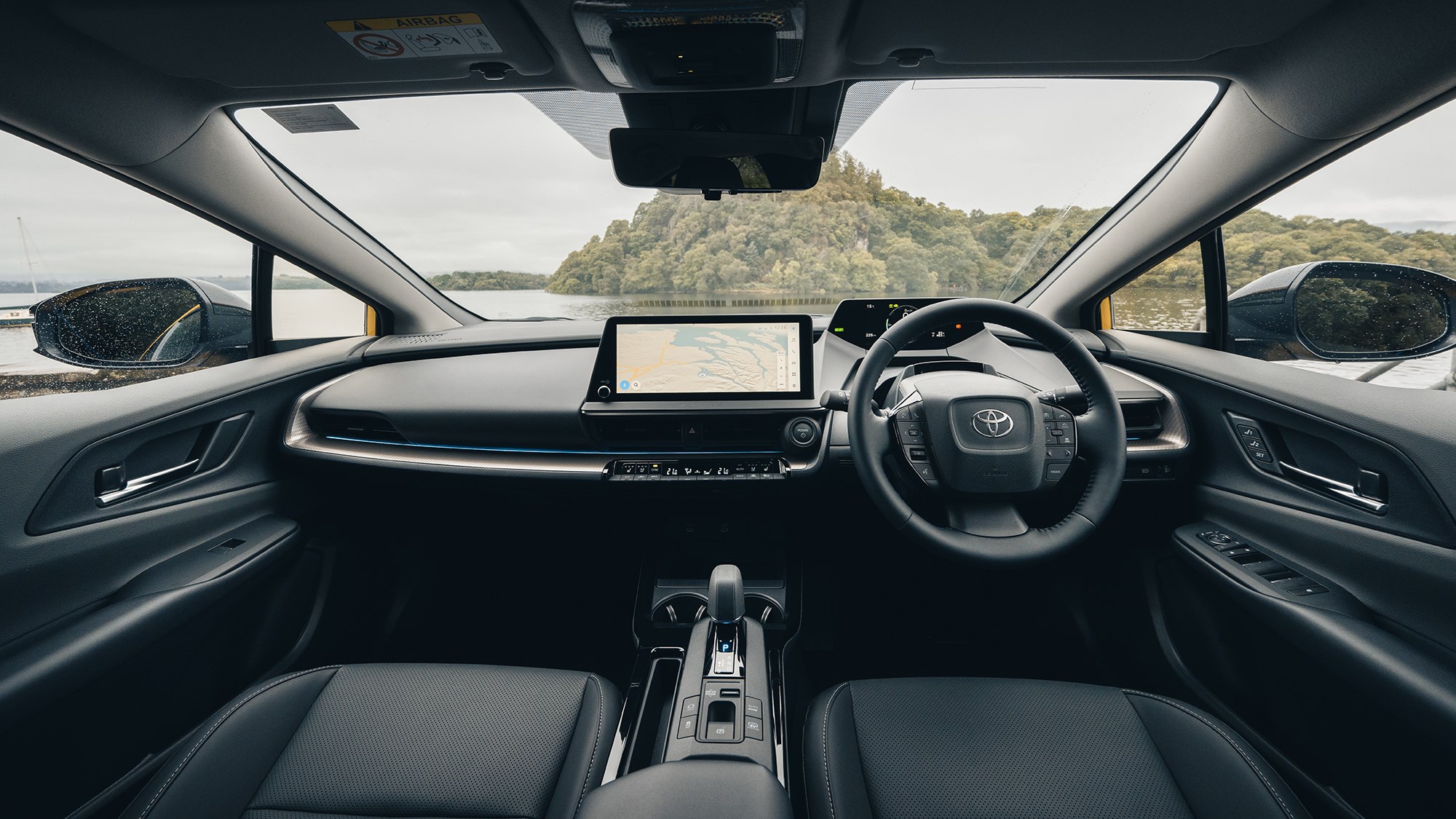
What about the interior?
With the price jumping to almost £40,000 before options, it’s good to see interior quality has been improved for the new Toyota Prius. There’s a good mix of soft-touch materials in the places you’ll touch regularly, interestingly textured hard plastics where you look regularly, and only the lower reaches of the cabin gets the black scratchy elephant skin. Sadly, it lacks the visual flair of its striking exterior.
Most functions are taken care of by a large, responsive and sharp touchscreen infotainment system, although we’re pleased to see physical controls on the dash and steering wheel. A big digital display is perched high on the dash in Peugeot iCockpit style for speed, hybrid info and everything else a driver might want. It’s sharp and easy to control via the steering wheel while its positioning keeps your eyes closer to the road.
Space up front is unlikely to be an issue, partially because you’re sat so much lower than before. Legroom in the back is fine for a car of this size, with the roofline predictably limiting rear headroom. If Toyota wanted to put minicabbers off, they’ve succeeded.
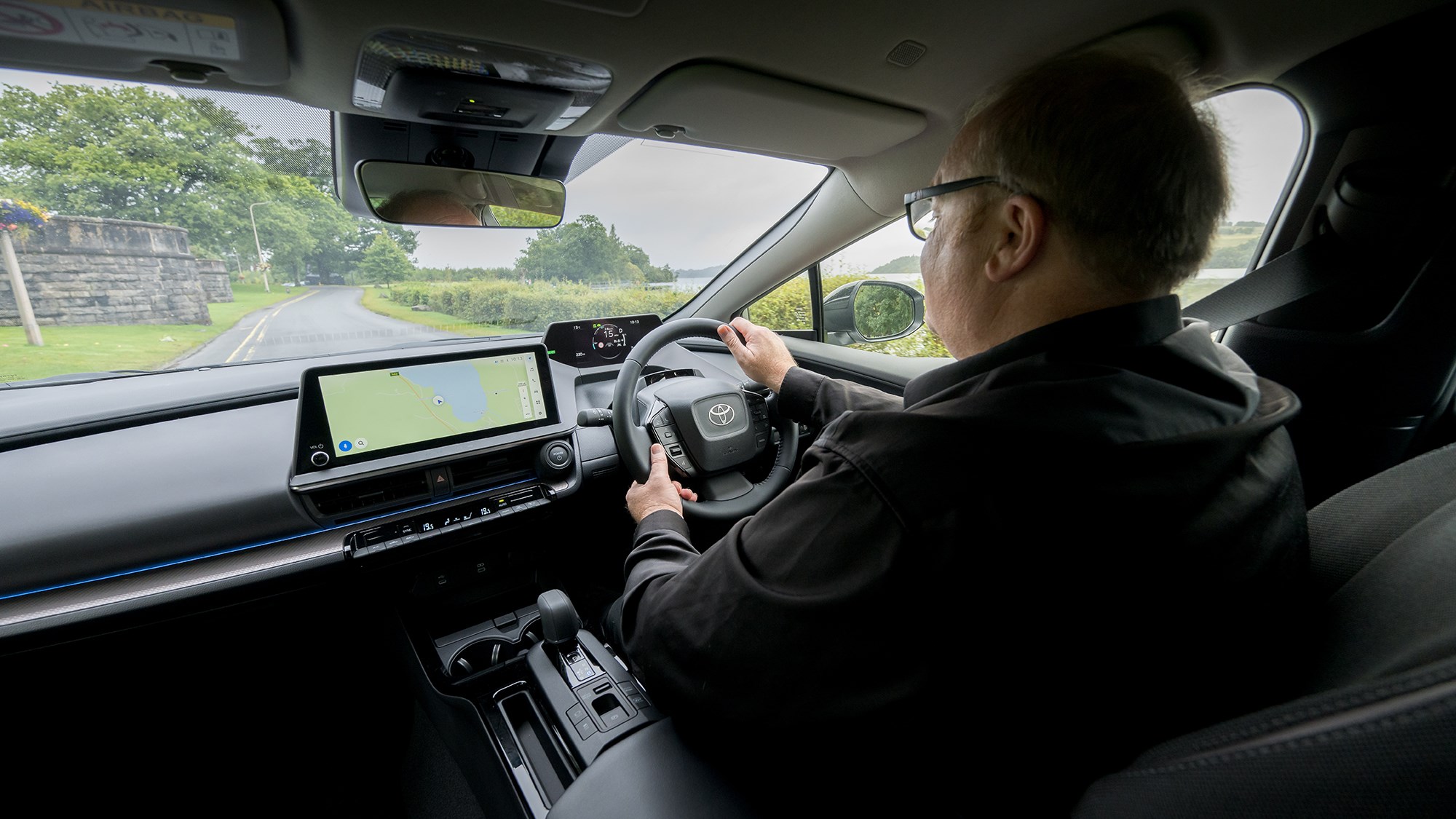
How does it drive?
Very well indeed. If you’re expecting instant EV-style acceleration, you might be slightly disappointed. Instead, recalibrate yourself to a more linear, gentle experience that builds up and successfully disguises its non-Prius-style pace. Once the engine’s wound itself up to peak power the Prius is pleasingly brisk and a far cry from its predecessor’s near 10-second 0-62mph time.
The new suspension set-up is more than up to the task, with direct, precise steering that makes stringing together a few corners a far more pleasant experience. Just don’t expect much feel through the steering wheel’s rim, even if it’s a model of precise communication compared with the tip-toey SUVs it’s likely to be sharing shopping lists with.
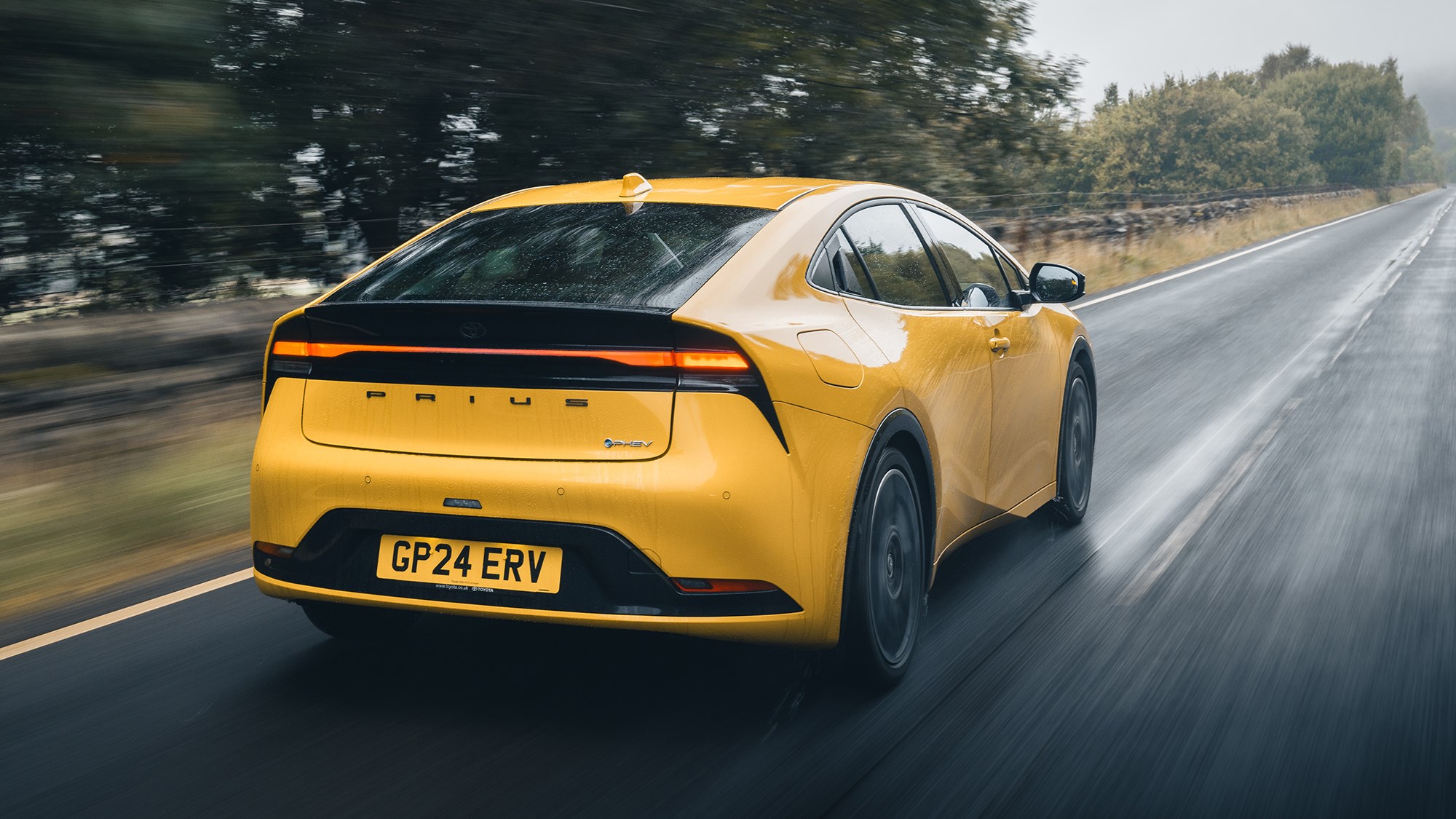
As is the case with all of the firm’s TNGA-underpinned models, the Prius puts in a poised performance. There isn’t much lean even when you’re exploring the generous grip levels, so a B road blast isn’t the pointless exercise you might expect. It’s unlikely you’ll be whooping with delight, but the new found agility and cross-country pace makes it reasonably entertaining, and surprisingly effective at covering ground quickly.
It even sounds less annoying than before. In most situations the engine’s note will still be rising slightly by the time you’ve finished accelerating, and it sounds a little rortier than before. Hitting motorway speeds from a standstill as quickly as possible will get the engine holding revs unnaturally as before, but we can live with that, and it can be undone by a quick tickle of the accelerator pedal.
Bigger 19-inch wheels and a more handling oriented setup does mean it’s firmer than before, if not uncomfortably so thanks to supple damping. The good news is that it deals with the worst that the UK road network can throw at it with, with mid-corner potholes felt and heard, but certainly not throwing you off-course.
Before you buy
Two trim levels, Design and Excel, are offered with just the one powertrain. Prices range from £37k to £39k, and as with all Toyotas, it comes with the firm’s ‘Relax’ warranty which covers the car for up to 10 years, as long as you stick to the main dealer network.
That puts it in among plug-in hybrid rivals such as the Volkswagen Golf, Skoda Octavia, Peugeot 308 and Vauxhall Astra. But the Toyota is a more refined experience than all of them, and makes more of a design statement in exchange for a certain amount of practicality in the rear.
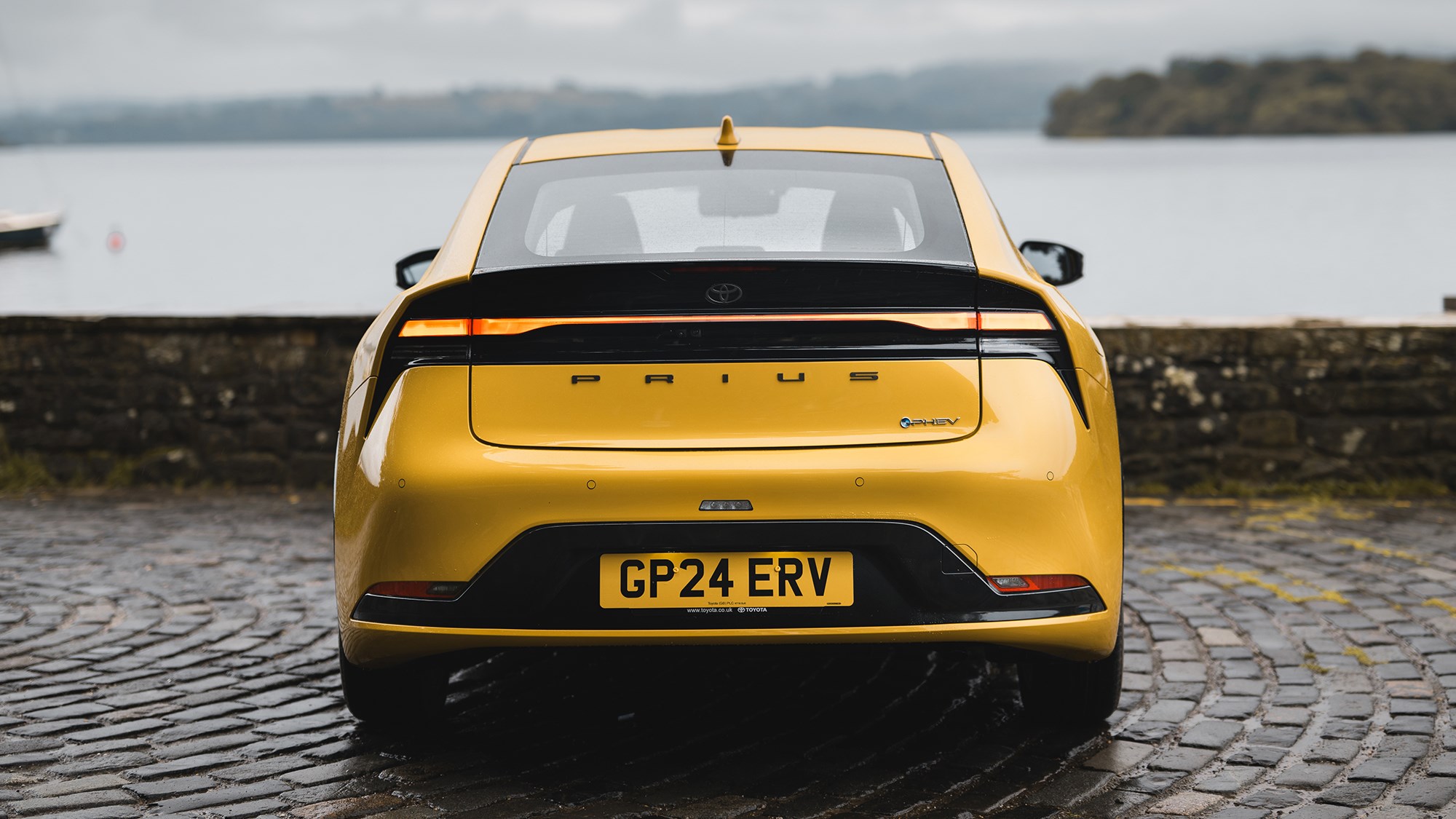
Verdict
While a Prius has often been a welcome sight, for once it’s not just when your Uber turns up on a rainy night. The latest plug-in isn’t as practical as its predecessor, but we’re happy to trade a bit of space for some genuine desirability. More importantly, it offers an interesting choice in a family car market that’s becoming a pit of SUV-shaped homogenisation.
It looks great inside and out, is good to drive, devilishly efficient and even reasonably quick. These are qualities not normally associated with the Prius, and mark a welcome change in direction for this popular family car. Even with the new C-HR hoovering up retail sales, and the Corolla doing a great job in the taxi trade, we’d be shocked if Prius sales don’t take a turn for the better.